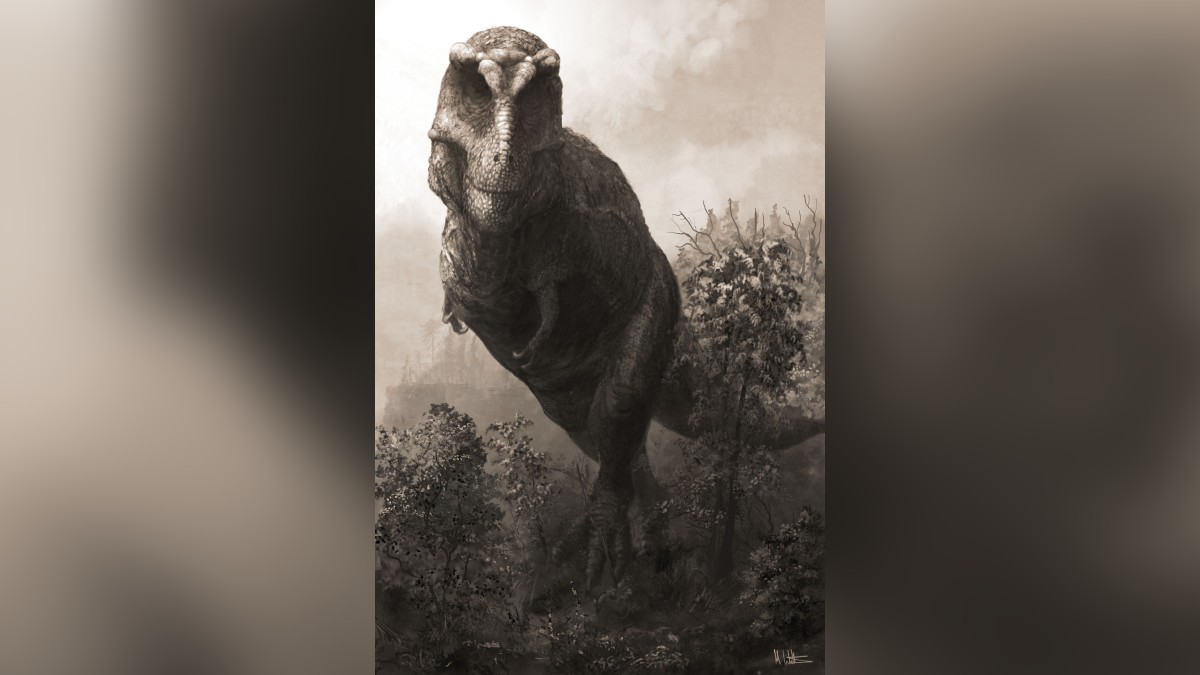Dinosaurs are well known and loved for the immense size these ancient creatures used to reach. But could some have been even bigger than we think?
New mathematical modelling suggests that some individuals during the ‘Age of Dinosaurs’ might have grown to truly monstrous proportions, like massive individuals of animals today.
For instance, the average African elephant measures about 4 metres to the shoulder and weighs in at more than 6 tonnes. The largest individual recorded, however, weighed nearly 11 tonnes!
The study is published in the journal Ecology and Evolution.
Among the findings is the terrifying prospect that 66 million years ago, a Tyrannosaurus rex 70% larger than its kin could have roamed Earth.
Most dinosaur species are known from only a handful of fossils. Some are known from a single fragment. It is unlikely that we will ever know for sure the range of sizes that different individuals in a species would have reached.
But it is possible to infer some averages.
T. rex, for example, is believed to have grown to about 12m long and up to 9 tonnes. But, among the 2.5 billion T. rex believed to have lived at some point at the end of the Cretaceous period, it is possible that some grew much larger.
Factoring in variables like population size, growth rate, lifespan and the incompleteness of the fossil record, researchers extrapolated the dimensions truly large individual T. rex might have reached.
They found that the largest known T. rex fossils, such as the one currently on display at Melbourne Museum, probably fall in the 99th percentile – the top 1% of T. rex in terms of body size.
To find an animal in the top 99.99% (a one-in-ten-thousand individual), palaeontologists would have to dig for another 1,000 years.
How big would such a T. rex be anyway?
The simple answer is MASSIVE. The researchers estimate that some T. rex may have reached the mammoth proportions of 15 metres in length and 15 tonnes. That’s more than half the length of a basketball court and about the weight of an average bus.
The authors suggest that the study contains more useful information than simply how cool it is to imagine gargantuan dinosaurs.
“Our study suggests that, for big fossil animals like T. rex, we really have no idea from the fossil record about the absolute sizes they might have reached,” says author Jordan Mallon from the Canadian Museum of Nature. “It’s fun to think about a 15-tonne T. rex, but the implications are also interesting from a biomechanical or ecological perspective.”
While these are estimates, the researchers say the existence of giant individuals among modern species hints that there would have been giant dinosaurs too.
“Some isolated bones and pieces certainly hint at still larger individuals than for which we currently have skeletons,” adds author David Hone from the Queen Mary University of London.
“It’s important to stress that this isn’t really about T. rex, which is the basis of our study, but this issue would apply to all dinosaurs, and lots of other fossil species,” Hone says. “Arguing about ‘which is the biggest?’ based on a handful of skeletons really isn’t very meaningful.”





















Discussion about this post